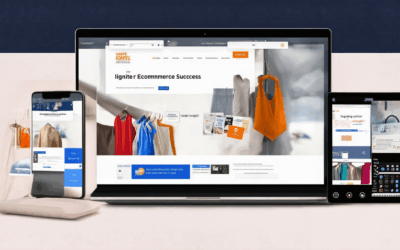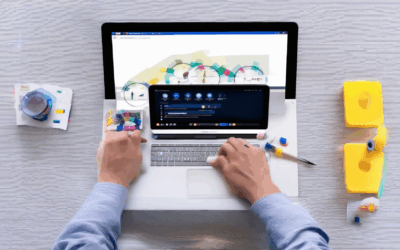Designing for accessibility is a cornerstone of modern design practices, ensuring that products, services, and environments are usable and enjoyable by everyone, regardless of their abilities or circumstances. As the demand for inclusivity grows, so does the need for comprehensive guides that explore the core concepts, principles, and practical applications of accessibility design. This guide delves into the essential aspects of designing for accessibility, from understanding the fundamental principles to applying them in real-world scenarios. By examining the key areas, tools, and frameworks, this article aims to empower designers with the knowledge and strategies needed to create inclusive solutions that promote equality and foster a better quality of life for all individuals.
Key Takeaways
– Understanding the Distinction Between UDL and Accessibility: Universal Design for Learning (UDL) focuses on creating flexible learning environments for all learners, while accessibility targets removing barriers for individuals with disabilities.
– Core Principles of Universal Design: Emphasize flexibility, compatibility, usability, diversity, resilience, and inclusivity to ensure designs benefit everyone.
– Benefits of Universal Design: Drive market expansion, reduce retrofitting costs, and ensure legal compliance with standards like WCAG and ADA.
– Relationship Between ADA and Accessibility: ADA provides a legal framework for accessibility in the U.S., while accessibility broadly aims for universal usability, encompassing more than legal requirements.
– Examples of Universal Design in Action: Include web design with alt texts, public spaces with ramps, and educational materials readable by screen readers.
– Implementation Considerations: Engage stakeholders with diverse abilities, adhere to standardized guidelines, and maintain designs over time.

Designing for Accessibility
Accessibility in design ensures that products, services, and environments are usable by all individuals, regardless of their abilities, physical or cognitive. It focuses on removing barriers that may prevent interaction with digital content, tools, or physical spaces. Here’s a breakdown of key aspects:
Key Principles of Accessibility
- Perceivability: Design elements must be understandable and interpretable by all users. Clear text, high contrast, and consistent navigation help accommodate various learning styles.
- Navigability: Ensure users can navigate through interfaces efficiently, using assistive technologies like screen readers and keyboard navigation.
- Usability: Create intuitive interfaces that are easy to use for everyone, including those with physical or cognitive limitations. Simplify controls and minimize complexity.
- Cognitive Load: Design with limited information overload, using patterns and layouts that reduce mental strain, ideal for users with conditions like ADHD or autism.
- Mobility: Allow for alternative input methods, such as keyboard shortcuts or voice commands, catering to users with motor impairments.
- Hearing Impairments: Provide closed captions, transcripts, and audio descriptions for multimedia content to support users with hearing loss.
Best Practices for Implementation
- Use semantic HTML tags to structure content, ensuring screen readers can interpret it accurately.
- Implement ARIA (Accessible Rich Internet Applications) standards for web content to enhance accessibility.
- Add alt texts for images, describe graphs, and provide context for charts to aid visually impaired users.
- Ensure color contrast meets WCAG guidelines, avoiding reliance on color alone for information.
- Use keyboard-accessible forms and controls, allowing users to complete tasks without a mouse.
- Test designs with diverse user groups, including those with disabilities, to identify and fix accessibility issues early.
Tools and Resources
For further guidance, explore tools and frameworks designed to enhance accessibility in web and software development:
- WCAG 2.1 (Web Content Accessibility Guidelines) provides standards for web accessibility.
- MDN Web Docs on Accessibility offers practical implementation tips.
- Accessibility Rules simplifies understanding of key accessibility standards.
By integrating these principles into your design process, you can create inclusive experiences that benefit everyone, fostering a more equitable digital world.
The Four Principles of Accessibility
The four core principles of accessibility ensure that digital content is usable by everyone, including individuals with disabilities. These principles guide the creation of inclusive digital experiences.
- Perceivable
- Content must be perceivable to individuals with sensory limitations, such as blindness or low vision.
- Provide text alternatives for non-text content (e.g., images, videos).
- Use sufficient contrast between text and background.
- Ensure screen readers can interpret content.
-
Operable
- Make content operable for individuals with physical, sensory, or cognitive limitations.
- Ensure keyboard navigation is functional.
- Provide mechanisms to bypass repetitive tasks (e.g., auto-populating forms).
- Use standard controls and interactions.
-
Understandable
- Content must be understandable for individuals with cognitive, learning, or developmental disabilities.
- Use clear and simple language.
- Structure content semantically (e.g., using headings, lists, and paragraphs).
- Avoid jargon or complex information.
-
Robust
- Ensure content is robust enough to adapt to different assistive technologies and evolving standards.
- Use open standards and technologies.
- Allow for personalization (e.g., font size, color contrasts).
- Ensure compatibility with screen readers and other assistive tools.
By adhering to these principles, designers and developers can create websites, apps, and digital tools that are accessible to a diverse range of users, promoting inclusivity and equality in the digital space.

What are the 4 areas of accessibility?
1. Perceivable
The content is perceivable if it can be accessed by everyone, regardless of ability. This includes providing text alternatives for images, audio descriptions for videos, and sufficient contrast ratios for visually impaired users. Ensuring that content is perceivable helps bridge communication gaps between people of varying abilities.
2. Operable
Content must be operable, meaning it can be navigated effectively. This involves ensuring keyboard navigation works, time limits are reasonable, and status messages are clear. Operable content allows users with mobility or dexterity challenges to interact with the content independently.
3. Understandable
Content should be understandable to everyone. This requires clear language, well-structured information, and proper labeling. Providing context and avoiding jargon ensures that users, including those with cognitive impairments, can grasp the information effectively.
4. Robust
Content needs to be robust against changes in technology and user preferences. This means designing with flexibility in mind, ensuring compatibility across browsers and devices, and anticipating future advancements. A robust design minimizes barriers for users encountering the content through various platforms and tools.
By focusing on these four areas, developers and creators can ensure their content is inclusive, accessible, and usable for all potential users.

Understanding the Difference Between UDL and Accessibility
Universal Design for Learning (UDL) and accessibility are both important concepts in education and design, but they serve distinct purposes and operate on different principles. Below is a comparison of the two:
- Scope and Application:
- UDL: A proactive approach focused on creating flexible learning environments that cater to diverse learning needs. It anticipates variability and provides multiple means of engagement, representation, and action & execution.
- Accessibility: Reactive approach aimed at removing barriers for individuals with disabilities, ensuring they have equal access to opportunities, services, and facilities.
- Focus:
- UDL: Broadly applies to all learners, including those without disabilities, by designing curriculum and environments that are accessible and effective for everyone.
- Accessibility: Targets specific groups of individuals with disabilities, often focusing on legal compliance and meeting explicit standards.
- Implementation Strategy:
- UDL: Involves designing curriculum and instruction that is inherently flexible and accommodating, often using universal principles to reduce the need for accommodations.
- Accessibility: Requires intentional modifications or adaptations based on the specific needs of individuals with disabilities, often through specialized tools or services.
- Goal:
- UDL: To create inclusive learning experiences that work for all students, fostering equity and maximizing learning outcomes.
- Accessibility: To ensure that individuals with disabilities can access and participate in societal activities equally.
What is the Universal Design Theory of Accessibility?
The universal design theory of accessibility posits that products, services, and environments should be designed to be accessible to all individuals, regardless of their abilities, from the outset. This approach emphasizes inclusivity and anticipates diverse needs, ensuring that designs are usable and functional for everyone.
Core Principles of Universal Design
- Flexibility : Designs should accommodate a wide range of individual differences, including physical, sensory, cognitive, and developmental abilities.
- Compatibility : Products and environments should work effectively with assistive technologies, such as screen readers, Braille displays, and wheelchairs.
- Usability : Interfaces should be intuitive and easy to navigate, reducing barriers for all users, including those with disabilities.
- Diversity : Designs should consider cultural, linguistic, and environmental factors to ensure broad applicability.
- Resilience : Systems should remain functional during failures or disruptions, providing alternative pathways for access.
Examples of Universal Design in Action
- Web Design : Implementing alt texts for images, providing keyboard navigation, and ensuring contrast ratios meet accessibility standards.
- Public Spaces : Designing public buildings with ramps, widened doorways, and visual aids for individuals with low vision.
- Educational Materials : Creating PDF documents with text alternatives for images and tables, ensuring they are readable via screen readers.
Benefits of Universal Design
- Market Expansion : Accessible products appeal to a broader audience, increasing market reach and potential revenue.
- Cost Efficiency : Retrofitting for accessibility later is often more expensive than incorporating accessibility from the beginning.
- Legal Compliance : Many accessibility laws and regulations mandate adherence to universal design principles, ensuring compliance can reduce legal risks.
Considerations for Implementation
- Stakeholder Engagement : Involve people with diverse abilities in the design process to ensure their needs are met.
- Standardization : Adhere to established accessibility standards, such as WCAG (Web Content Accessibility Guidelines) and ADA (Americans with Disabilities Act).
- Ongoing Maintenance : Regularly update designs to stay compliant with evolving accessibility standards and technologies.
By adopting universal design principles, organizations can create inclusive solutions that benefit everyone, fostering a more equitable and accessible world.

Understanding the Difference Between ADA and Accessibility
The terms ADA (Americans with Disabilities Act) and accessibility often come up in discussions about inclusivity and design. While they share common goals, they differ in scope and application.
ADA: Legal Framework
- ADA is a US-based law established in 1990 to protect individuals with disabilities from discrimination in employment, public accommodations, transportation, and telecommunications.
- It mandates reasonable accommodations and modifications to ensure equal access for people with disabilities in various settings.
- ADA compliance is legally enforceable and applies specifically to facilities and services covered under the act.
Accessibility: Broader Concept
- Accessibility refers to designing products, services, and environments to be usable by all people, including those with disabilities.
- It encompasses physical, visual, auditory, and cognitive considerations to ensure ease of use for everyone.
- Accessibility standards may go beyond ADA requirements, focusing on universal design principles that benefit all users, not just those with disabilities.
Why Both Are Important
- ADA ensures legal compliance and accountability for inclusive design in specific contexts.
- Accessibility extends the principle of inclusion beyond legal boundaries, aiming for universal usability.
- Together, ADA and accessibility work to create environments and experiences that are inclusive, equitable, and accessible to all.
Conclusion
While ADA provides a legal foundation for accessibility in the US, accessibility as a concept goes further to promote inclusivity globally. Understanding both helps create spaces that are truly usable and welcoming for everyone.




0 Comments